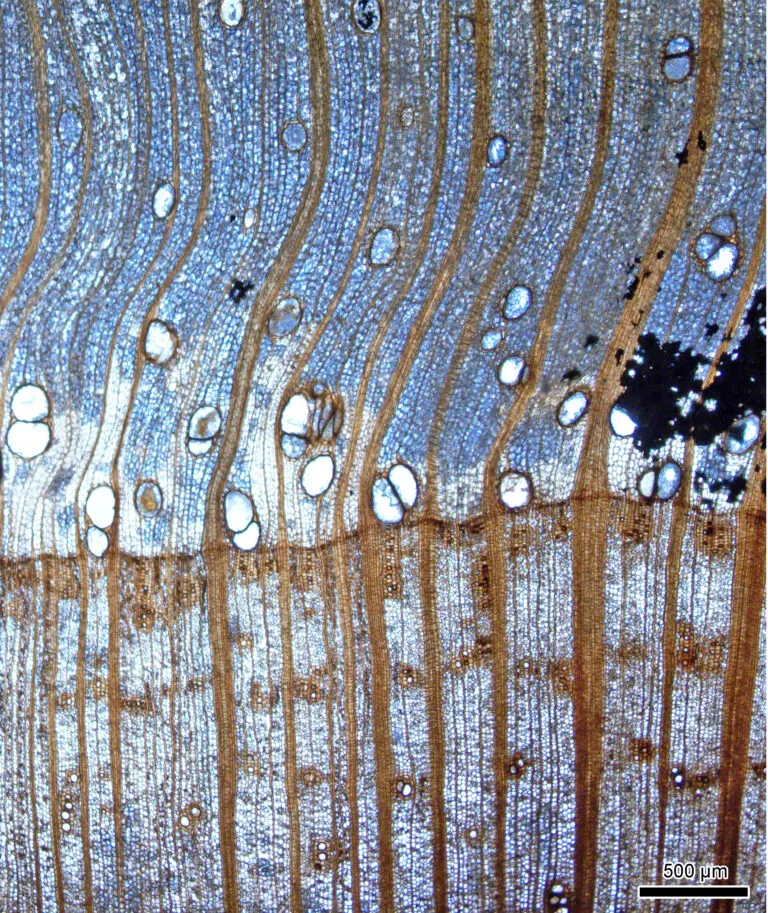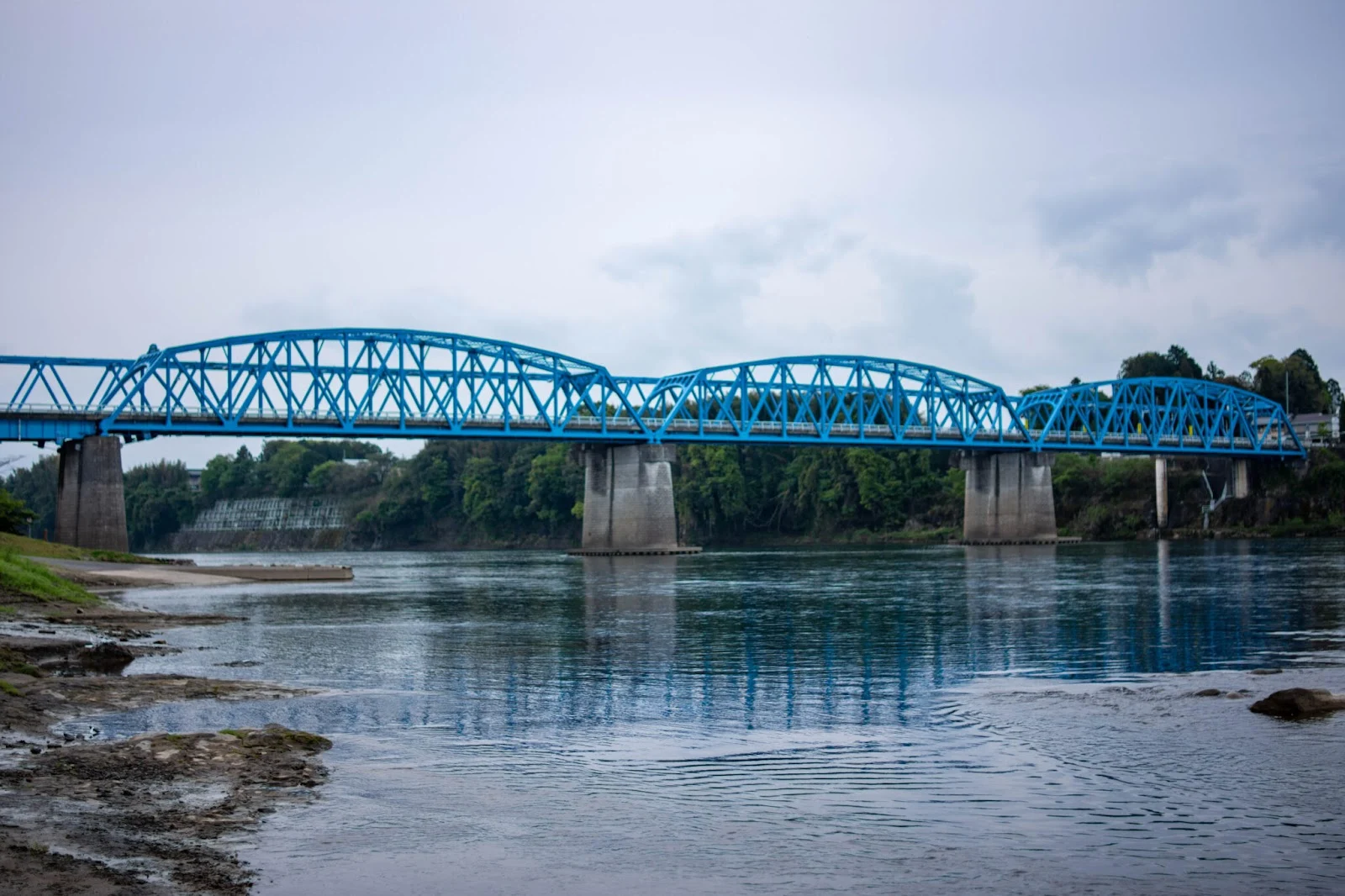Miocene period fossil forest of Wataria found in Japan | Hokkaido University


Wataria parvipora showing annual rings. It is one of the characteristics that helped the scientists in identifying the wood-fossil.
This creates a problem for the cult leaders who have to keep devising strategies for ignoring all the many examples of transitional fossils that palaeontologists keep unearthing; one of which is to claim that the transitional fossil is that of a fully formed species, which works on people who think evolution means one taxon turns into a different taxon such as cats turning into dogs or crocodiles into ducks, or, in the case of humans (the (non)evolution of whom is a special obsession with creationists), a chimpanzee turning into a fully modern human.
For a laugh, try asking a creationist to describe exactly what they would expect a transitional fossil to look like!
Anyway, this article is about examples of transitional fossil plants that have been found in an especially well-preserved fossilised Miocene Forest in an exposed bed of the Kiso River. The river level was subject to an unprecedented drought in 1994 which exposed 400 fossilized tree stumps. The stumps are now inundated again but not before a research group led by Professor Toshihiro Yamada of the Department of Earth and Planetary Sciences, Hokkaido University, had analysed 137 stumps, of which 130 were identified as Wataria parvipora. The stumps were covered in leaves identified as Byttneriophyllum.
An exquisitely preserved fossil forest from Japan provides missing links and helps reconstruct a whole Eurasia plant from the late Miocene epoch.Technical detail is given in the team's paper in Scientific Reports:Complete plant fossils are seldom found as a single piece, as wood, leaves, flowers, fruits, seeds, or pollen detach easily from plants. This results in leaves and trunks having separate scientific names. Putting together the different parts to reveal the complete plant is like putting together a jigsaw puzzle. Connecting these dots and reconstructing plants is important to establish their taxonomic identity—their place in the Tree of Life.A well-preserved fossilized forest from the late Miocene epoch was found in Japan, near the Ota bridge on the Kiso river.
Photo: Toshihiro Yamada
A research group led by Professor Toshihiro Yamada from the Department of Earth and Planetary Sciences, Hokkaido University, found an exceptionally well-preserved fossil of a Wataria parvipora forest which was almost exclusively accompanied by fossils of Byttneriophyllum leaves. Their findings were published in the journal Scientific Reports.
A fossil forest of Wataria was found in the Gifu Prefecture, on the bed of the Kiso River. Location of study site in Japan
Green area highlights the Mizunami group, a geological formation of which the Kani Basin, where the study site was located, is a part.
Adapted from Nishino et al., Scientific Reports, June 22, 2023)In 1994, Kiso River (in Minokamo City, Gifu Prefecture) underwent a historic drought, in the process of which 400 in situ fossilized tree stumps surfaced. While most of the stumps have since been submerged, the team examined 137 stumps, of which 130 were identified as Wataria parvipora.” says Yamada.Wataria is a wood-fossil, recognized by its distinctive growth rings, abundant parenchyma rays and lack of resin canals. In the 2000m2 fossil site, these stumps accounted for 95% of the tree remains, indicating that we discovered a forest predominantly of this species.
We found that 98% of the fossil-leaves found at the site belonged to Byttneriophyllum, strongly indicating that they were shed from the parent trees. We could see that the leaves were deposited paraautochthonously on the forest floor—they got fossilized where they fell.
Professor Toshihiro Yamada, senior author
Department of Earth and Planetary Sciences
Faculty of Science
Hokkaido University, Sapporo, Japan
The team also found that the stumps were exclusively covered by a bed of one specific kind of leaf. Byttneriophyllum tiliifolium is a leaf-fossil species belonging to the mallow family (which includes cotton, cacao and durian). Fossils of this leaf were widely distributed throughout Eurasia during the Miocene and Pliocene epochs and the discovery of the Wataria fossil forest indicates that Byttneriophyllum tiliifolium are the leaves of Wataria.
Research by other groups has shown that the fossil fruit Banisteriaecarpum giganteum is related to Byttneriophyllum tiliifolium. Future research will focus on searching for Banisteriaecarpum giganteum in Japan, as this discovery would provide strong evidence that all three are part of the same species.
AbstractOf course, if the creationist superstition about a global genocidal flood were true, there is no way these fossils could have been preserved this way and they would be jumbled up with animal and plant fossils from all over the world because, in a global flood, there are no barriers to how far plant debris and drowned bodies can float until it becomes waterlogged and sinks into the inevitable global layer of sediment such a flood would produce.
Byttneriophyllum tiliifolium is a leaf fossil-species of the family Malvaceae that was distributed widely throughout Eurasia from the Miocene to the Pliocene. An affinity to some Malvadendrina subfamilies has been suggested for Byttneriophyllum-bearing plants, but remains to be clarified due to insufficient information on other organs. Here, we report an exceptional lower Miocene fossil locality in Japan where a monodominant forest of the wood fossil-species Wataria parvipora flourished. Notably, the forest floor was covered by a bed consisting almost exclusively of B. tiliifolium. We observed occurrence modes of B. tiliifolium in this bed that confirmed that these leaves were deposited parautochthonously. These observations imply a biological connection between B. tiliifolium and W. parvipora. The wood and leaf characters together might narrow the affinity of Byttneriophyllum-bearing plants down to Helicterioideae within the Malvadendrina, although it is also possible that Byttneriophyllum-bearing plants constitutes an extinct lineage which is characterized by a combination of morphological traits found in several extant lineages. Our results suggest that Byttneriophyllum-bearing plants started to inhabit swamps no later than the end of the early Miocene when the global temperature was getting warmer.
Figure 2 Wataria stumps and Byttneriophyllum bed in the PFP section. (a) Largest Wataria stump (individual #1, 137-cm trunk diameter) in the PFP section. (b) Wataria stumps found at site 2. The arrowhead shows the Byttneriophyllum bed from which leaf data were collected. (c) Surface views of the Byttneriophyllum bed at site 1. The surface was entirely covered by stacked B. tiliifolium leaves, except for one Ulmus protojaponica leaf (asterisk).
Wataria stumps and Byttneriophyllum bed in the PFP section. (a) Largest Wataria stump (individual #1, 137-cm trunk diameter) in the PFP section. (b) Wataria stumps found at site 2. The arrowhead shows the Byttneriophyllum bed from which leaf data were collected. (c) Surface views of the Byttneriophyllum bed at site 1. The surface was entirely covered by stacked B. tiliifolium leaves, except for one Ulmus protojaponica leaf (asterisk).
Figure 5(a–d) Wataria parvipora from the Nakamura Formation in the PFP section. (a) Cross section showing parts of two annual rings with early wood in the center and late wood above and below. OSA-TB 9204-c1. (b) Multistoried axial parenchyma and narrow vessels (nv) in a radial section. OSA-TB 9204–r1. (c) Tile cells (tc) and procumbent cells (pc) in a radial section. OSA-TB 9204–r1. (d) Tangential section showing multiseriate rays and multistoried axial parenchyma. OSA-TB 9204–t1.
Nishino, M., Terada, K., Uemura, K. et al.
An exceptionally well-preserved monodominant fossil forest of Wataria from the lower Miocene of Japan.
Sci Rep 13, 10172 (2023). https://doi.org/10.1038/s41598-023-37211-z
Copyright: © 2023 The authors.
Published by Springer Nature Ltd. Open access.
Reprinted under a Creative Commons Attribution 4.0 International license (CC BY 4.0)
And then, there is the embarrassing little fact that the fossils are of earlier species that evolved into the extant plants we see today. They also provide evidence of the common ancestry of a sub-group of plants because it shows that the leaves known from the fossil record as Byttneriophyllum tiliifolium very probably was the leaf of the fossil tree known as Wataria parvipora.








No comments :
Post a Comment
Obscene, threatening or obnoxious messages, preaching, abuse and spam will be removed, as will anything by known Internet trolls and stalkers, by known sock-puppet accounts and anything not connected with the post,
A claim made without evidence can be dismissed without evidence. Remember: your opinion is not an established fact unless corroborated.